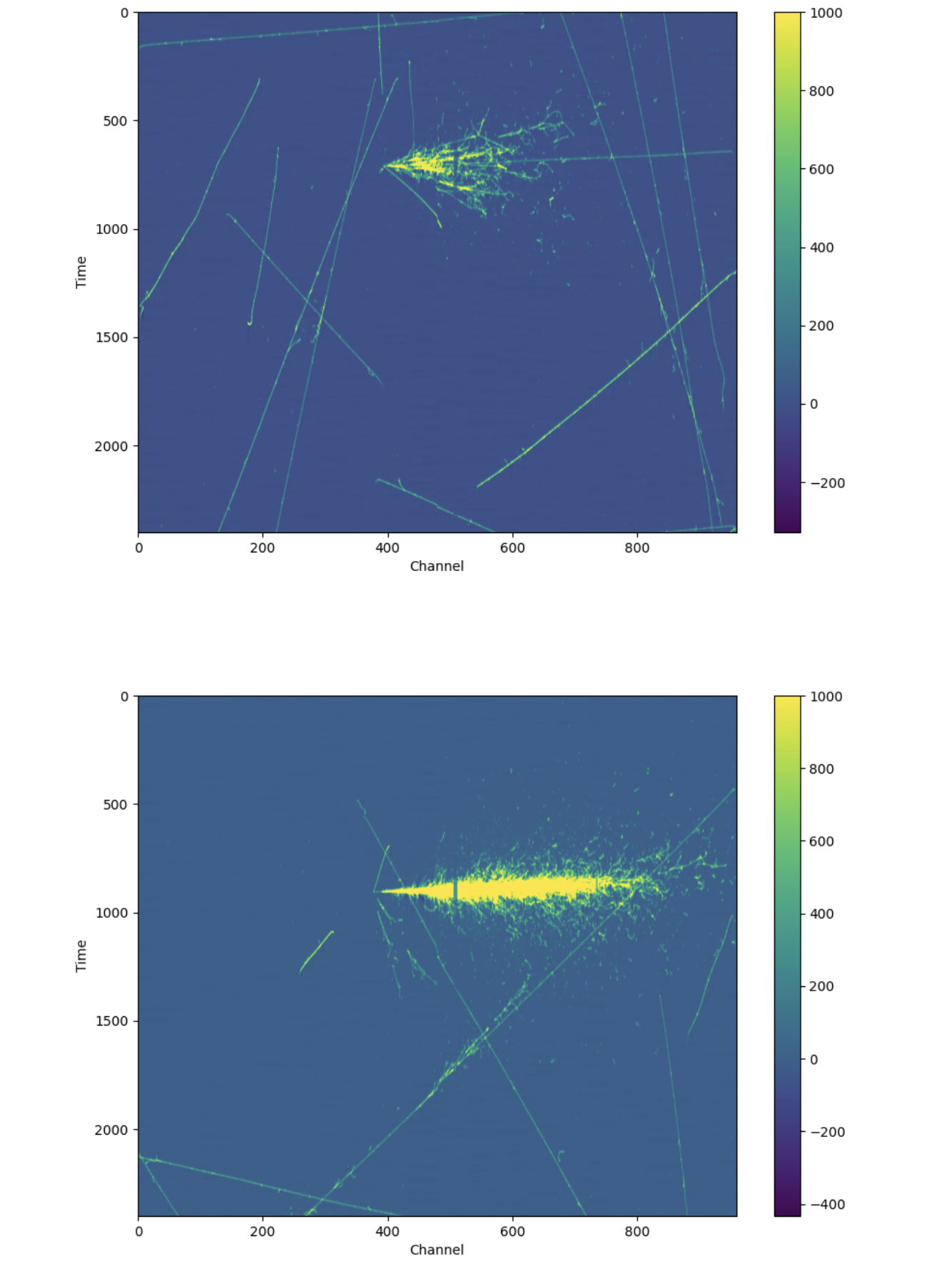NEUTRINOS in the North Hall: Leveraging T2’s Beam to Detect Neutrinos and Explore New Physics

One of the conclusions of the ESPPU 2013 process was that CERN should engage actively in the world accelerator based neutrino program. As a result, CERN joined, among others, the DUNE project and took a leading role in the construction of two large 700 ton Liquid Argon TPCs prototypes for the DUNE far detector. These ProtoDUNEs (PDs) started operating in 2018 with low energy hadron and electron beams. Both detectors are located at the very end of an extension of the North Hall, EHN1, at the Neutrino Platform.
Recently it was pointed out [1] that these detectors are located in the shadow of the T2 target, which during North Hall operations gets impinged upon by 400 GeV SPS protons, to create secondary particle beams. T2 can be considered a mini beam-dump where apart from the desired secondary particles also neutrinos from decaying mesons, and possibly even light weakly interaction BSM particles such as e.g. Heavy Neutral Leptons, axion-like particles or low mass dark matter particles are produced. These can be searched for and detected in the PDs, located about 600m downstream of the target.
Simulation studies have shown sensitivity to BSM particle detection in a so far experimentally uncovered region, but a real demonstration of the feasibility of this T2/PDs idea is to observe the well-known weakly interacting particle: the neutrino!
Collecting parasitically data at the end of the 2024 PD campaign, with a tailored trigger and offline software filter, led to the first ‘observation’ of accelerator delivered neutrino events in the PDs. Figure 1 below shows two examples of neutrino candidate events, one with an outgoing muon (likely a muon charged current event) and one without a muon (likely a different flavour charged current or possible neutral current event). If the number of observed neutrino events will agree with the prediction from simulation, it would validate that the PDs are ready to be used for searching for BSM signatures. These neutrino events can also be used for validating reconstruction software for DUNE and physics measurements, To capitalize further on this opportunity a proposal is being prepared to collect data in 2025-2026.

Figure 1: Neutrino candidate events at protoDUNE. One event shows an outgoing muon (likely a muon charged current interaction), while the other shows no muon (likely a different flavour charged current or possible neutral current interaction). If observed neutrino events align with simulation predictions, it will confirm the readiness of the PDs for BSM signature searches. These events also provide a key opportunity for validating DUNE reconstruction software and supporting physics measurements. A proposal is underway to collect data in 2025-2026 to further capitalize on this opportunity.
Note that effectively this is a similar set-up as planned for the future SHiP experiment, which will cover a more extended phase space and have a higher sensitivity. A bonus for the PDs however is that these can take data already now. This may also demonstrate the power of an electronic bubble-chamber type detector such as the Liquid Argon TPCs for an anomalous event searching experiment such as SHiP.
Further Reading
[1] Gorbunov, D. S., Konig, S., & Mohl, C. (2022). Heavy neutral leptons at the T2K experiment: Sensitivity study and new opportunities at DUNE. arXiv:2210.10056. https://arxiv.org/abs/2210.10056
